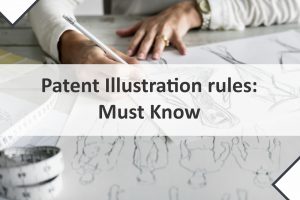Patent drawings are an essential component of a patent application. They provide visual representations of the invention and help clarify its features and functionality. Creating accurate and high-quality patent drawings is crucial for effectively communicating the invention to patent examiners and the public. In this step-by-step guide, we will walk you through the process of creating patent drawings that meet the requirements and standards set by patent offices.
Step 1: Understand the Patent Office Guidelines
Before starting the drawing process, familiarize yourself with the specific guidelines and requirements set by the patent office where you plan to file your application. Different patent offices may have specific rules regarding the format, size, labeling, and other aspects of patent drawings. Ensure that you have a clear understanding of these guidelines to ensure compliance.
Step 2: Gather Necessary Materials
To begin creating your patent drawings, gather all the necessary materials. This includes drawing tools such as pencils, pens, rulers, and erasers. You may also need drafting software or computer-aided design (CAD) tools if you prefer to create digital drawings. Additionally, ensure that you have the appropriate paper or digital file format as specified by the patent office.
Step 3: Visualize the Invention
Take time to thoroughly understand the invention and visualize its various components, features, and functionality. Consider the different perspectives and angles from which the invention should be depicted in the drawings. This step is crucial for accurately representing the invention and highlighting its unique aspects.
Step 4: Create Initial Rough Sketches
Start by creating rough sketches of the invention on paper or using digital drawing software. These initial sketches don’t need to be detailed but should capture the overall structure and key elements of the invention. Focus on accurately representing the invention’s shape, proportions, and important features.
Step 5: Refine the Sketches
Based on the rough sketches, refine and improve the drawings to make them more precise and detailed. Pay attention to the proportions, lines, and curves of the invention. Ensure that the drawings accurately represent the invention’s features and functionality. Use rulers and other tools to create straight lines and precise measurements.
Step 6: Include Relevant Labels and Annotations
Add labels and annotations to the drawings to provide clarity and context. Label different components, parts, and sections of the invention. Use reference numerals or letters to link the labels to specific features in the drawings. Include textual descriptions, arrows, or other symbols to further explain the functioning or relationship between different elements.
Step 7: Review and Revise
After creating the initial set of drawings, carefully review them for accuracy, clarity, and compliance with the patent office guidelines. Look for any errors, inconsistencies, or missing details. Make necessary revisions to improve the drawings and ensure that they effectively convey the invention.
Step 8: Finalize the Drawings
Once you are satisfied with the accuracy and quality of the drawings, finalize them for submission with your patent application. If you created hand-drawn drawings, consider scanning them and converting them into digital files as required by the patent office. Ensure that the drawings meet the specified format, resolution, and file size requirements.
Step 9: Seek Professional Assistance (if needed)
If you are unsure about creating patent drawings on your own or if your invention is complex, consider seeking professional assistance from a patent illustrator or a drafting service. These professionals have experience in creating high-quality patent drawings that meet the standards set by patent offices.
Conclusion
Creating accurate and clear patent drawings is crucial for effectively communicating your invention in a patent application. By following this step-by-step guide and adhering to the guidelines set by the patent office, you can create drawings that accurately represent your invention and enhance the understanding of its features and functionality. Remember to review your drawings carefully, make necessary revisions, and seek professional assistance if needed. With well-executed patent drawings, you can strengthen your patent application and increase the chances of securing protection for your invention.




